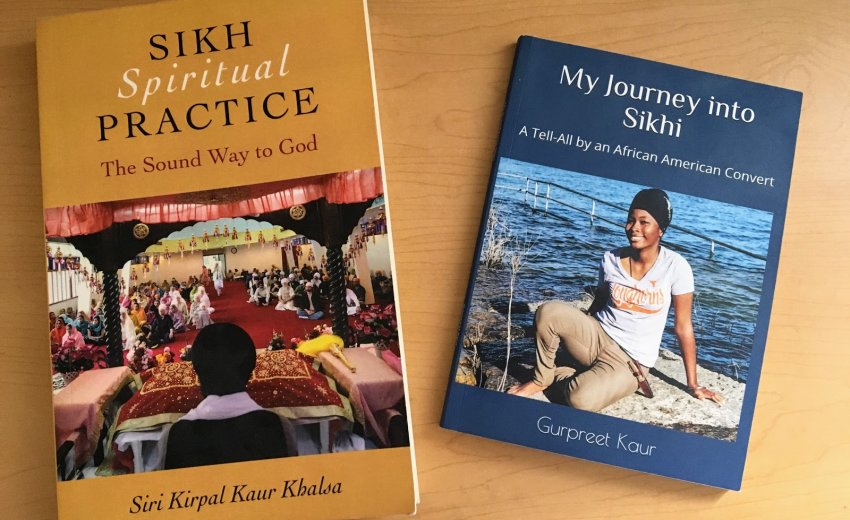With the blessing and a request from the author, today I will be giving my opinions on the written piece called "Sikh Spiritual Practice: The Sound Way to God". Before I even opened and read the book, I decided to take a quick glance at a few of the reviews that it had already garnered. Let's just say that they're very..antithetical. "Oh god", I groaned. "I really hope I'm not getting into something that I don't want to." But in spite of what people were saying, I drove to the lake, picked up the novel she had sent me, did a quick skim of the table of contents, and began to read.
The first few chapters were an excellent read. She covers the basics of Sikhism pretty nicely, discloses on her own journey into Sikhism (which by the way, I thoroughly enjoyed), and discusses the beauty of the Shabad. There's even one concept she created and that I found in there and have come to like called "shabad yoga". Shabad yoga is basically picking a shabad that you connect to and practicing it a certain amount of times each day. Not only do I think this practice will help Sikhs implement Sikhi into their daily routines more, but it also will have a positive effect on their psyche.
She then goes on to elaborate about Sikh practices and traditions (including Nitnem, the Amrit Ceremony, the protocols of attending a Gurdwara, etc), while incorporating her own personal stories and the stories of other Sikhs into the narrative. Out of all the stories, there was one in there (that comes from an article called "A Miracle During World War II) that I am somewhat skeptical of, but at the same time, I can't totally discredit it. The rest of the stories I think any normal person can easily relate to.
One thing that I find very respectable about this book that I have not seen in the majority of other Sikh novels is that she constantly pushes having respect towards Gurbani. For example, it is heavily advised that the reader should cover his or her head before we chanting any of the multiple shabads found in "The Sound Way to God". This is something that even some Gurdwaras have seem to stop implementing and that needs to start being pushed again.
Now, there are a few sections in this book geared towards people who practice Kundalini Yoga or who are a part of the path of Sikh Dharma (the organization). For those who don't fall under these two categories (including myself), you have two options. Either you can skim through those sections to get a better understanding of what people who have followed that path believe (which is what I did) or completely skip over them. That solves a lot of the "issues" that people have had with the book.
Overall, I would definitely recommend this book for anyone who might be new to Sikhi or interested in knowing about the Sikh way of life. I think that it would even be a good read for those who were born into the faith, since I've heard over and over again about how a lot of born and raised Sikhs weren't taught the "why" or even "what" behind things. I can tell that Mrs. Siri Kirpal Kaur Khalsa really did put her full energy into writing, and for that, she deserves some recognition.
My New Book
Like Kirpal Kaur K., I've also published a book. Called "My Journey into the Sikhi: A Tell-All by an African American Convert", this book gives the reader never before seen information into not only how I got into Sikhi but the events that took place all the way up until the point I toke Amrit. Several copies of my novel have already sold, and it's something that I believe you don't want to miss out on. It is only $4 on Amazon so that all people (regardless of socioeconomic background) can have access to this inspiring tale.
I would like to end on this note. Even though we come from completely different backgrounds, our opinions might differ on some things, and our journeys are completely different, I think it is so amazing how both of us (and others around the world) have started embracing Sikhism. And to that I say, "Dhan Guru Nanak".






